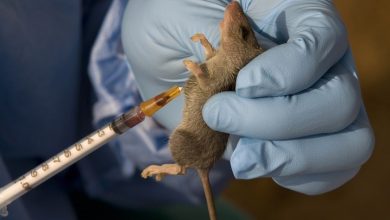UNAIDS seeks to reduce AIDS-related deaths to 250,000 by 2025

The Joint United Nations Programme on HIV/AIDS (UNAIDS), as part of the efforts to end AIDS, has set specific targets by 2025 concerning people who inject drugs. UNAIDS under its Global AIDS Strategy 2021/2026 has set a target to reduce annual AIDS-related deaths to fewer than 250,000 by 2025.
UNAIDS disclosed this in a report titled “Global AIDS Targets 2025 for People Who Use Drugs,” noting data available data shows that people who inject drugs since 2014 were still being left behind in the HIV response.
According to the report, as of 2022, the global median HIV prevalence among people who inject drugs was 5% across 50 reporting countries, seven times higher than among the rest of the adult population, aged 15 to 49.
It noted that in 16 countries with gender-disaggregated data, the reported median HIV prevalence among men who inject drugs was 9%, while it nearly doubled (15%) among women in the same category.
The report highlighted that in 2022, 630,000 deaths were AIDS-related while in 2019, nearly 500,000 people died from drug-related causes, with 15% attributed to HIV.
It noted that so far, at least 145 countries have criminalized the possession of small amounts of drugs; 47 countries report implementing compulsory detention, while 34 countries retain the death penalty in law for drug offenses.
Despite the criminalization of personal use of drugs in 143 countries, many users remain invisible, with little data on access to services or experiences of stigma, discrimination or violence. This makes it difficult to plan and implement programmes to monitor their progress, UNAIDS observed.
“While criminalization of drug possession for personal use persists, and as long as harm reduction services remain unavailable and poorly funded, it will not be possible to end AIDS as a public health threat,” it said.
The report observed that the invisibility/hiding of these drug users has also been caused by stigmatization and discrimination.
“In eight of 14 countries that recently reported data to UNAIDS, more than 10% of people who inject drugs avoided accessing health care services due to stigma and discrimination in the past 12 months,” it noted.
The report disclosed that only 37% of people who inject drugs were reported as receiving at least two HIV prevention services in the past three months from the reporting states.
It further showed that more than 50% of people who are dependent on opioids have access to Opioid Agonist Maintenance Therapy (OAMT), while 90% of people who inject drugs have access to comprehensive harm reduction services linked to Hepatitis C, HIV and mental health services.
UNAIDS noted that a change in the public health approach for drug users is critical to achieving the Global AIDS Strategy 2021/2026 target.
It outlined strategies needed which are aligned with WHO’s evidence-based and prioritized package of interventions for people who inject drugs.
These strategies include specific targets for people who inject drugs, and concerning prevention, testing, and treatment, societal enablers and community-led responses.
UNAIDS added that to meet the 2030 targets, US$ 2.7 billion, which is 89% of the resources, would be needed for interventions to lower- and middle-income countries
It also pointed out that US$3.1 billion (11% of the total estimated resource needs for the HIV response) per year is needed for enablers, including programmes addressing human rights; policy dialogue; reduction of stigma, discrimination and gender-based violence; and HIV-related legal services.
“Protect and promote the human rights of people who use drugs by treating them with dignity, providing equal access to health and social services, and by decriminalizing drug use/consumption and the possession, purchase and cultivation of drugs for personal use,” UNAIDS noted.
(Premium Times)





